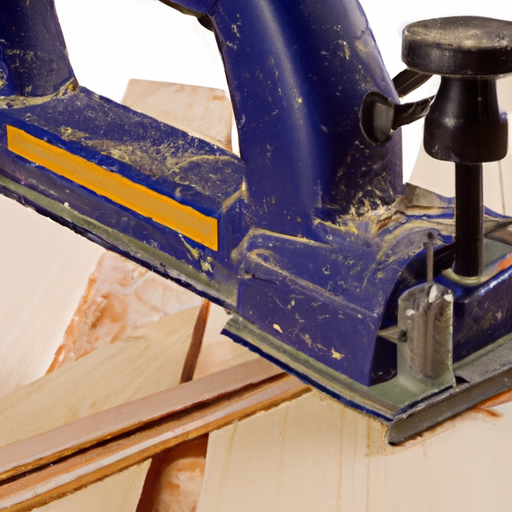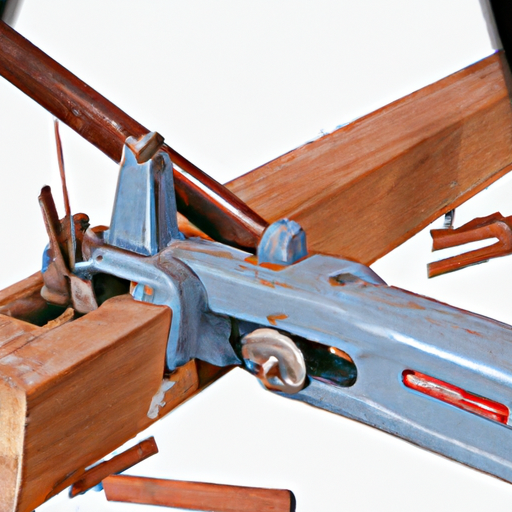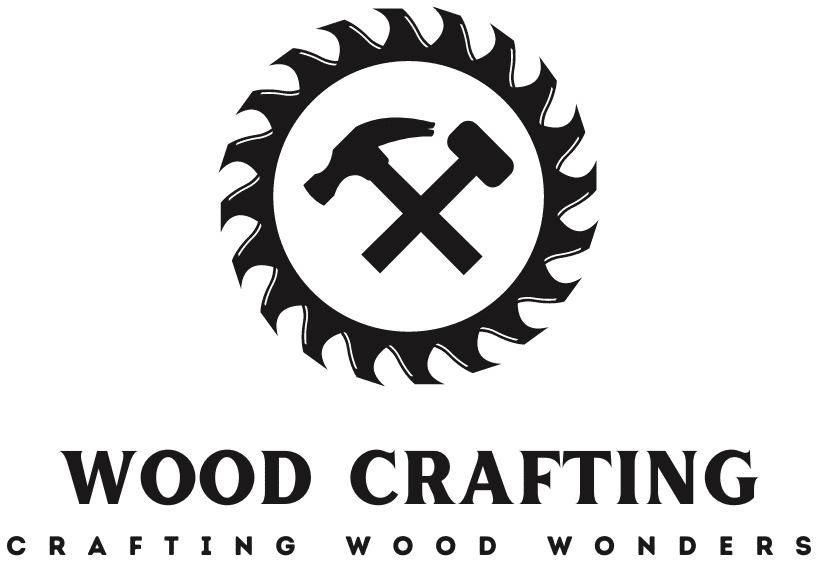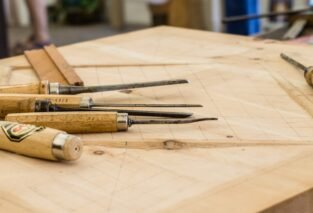and a planer? In this article, you will learn about the distinct purposes and functions of these two woodworking tools. We will explore how a jointer is used to create flat surfaces and straight edges, while a planer is essential for thickness planing and smooth surfaces. By understanding their unique features, you’ll be able to choose the right tool for your woodworking projects.
Introduction
If you’re a woodworking enthusiast or professional, you may have come across the need for a jointer. But what exactly is a jointer and how does it differ from other woodworking tools? In this article, we will explore the different aspects of a jointer, its functionality, key features, pros and cons, safety precautions, and how it compares to other tools like planers and routers. By understanding the differences between a jointer and other tools, you can make an informed decision and choose the right tool for your woodworking projects.
Definition of a Jointer
A jointer is a woodworking tool specifically designed for smoothing and leveling wood surfaces. It consists of a flat table-like surface with an infeed and outfeed table, a cutter head with rotating knives, and a fence. The purpose of a jointer is to create straight edges and square corners on pieces of wood, allowing for precise joinery.

Functionality of a Jointer
Smoothing and Leveling Wood Surfaces
One of the primary functions of a jointer is to smooth and level wood surfaces. As you feed a piece of rough or uneven wood through the jointer, the rotating knives of the cutter head will remove small amounts of material from the surface, resulting in a smooth and even finish. This is particularly useful when you have rough lumber that needs to be flattened before further processing.
Creating Straight Edges and Square Corners
Another important functionality of a jointer is its ability to create straight edges and square corners. By sliding the wood against the fence and feeding it through the jointer, the knives will remove material from the uneven or curved edges, allowing you to achieve perfectly straight edges and square corners for your woodworking projects. This is crucial for joinery, where precise and flush fitting is essential.
Preparing Wood for Joinery
In addition to smoothing and leveling surfaces, a jointer is also used to prepare wood for joinery. By creating straight and square edges, a jointer ensures that the pieces of wood fit together tightly and accurately. Whether you’re working on a simple box joint or a complex dovetail joint, a jointer will help you achieve the necessary accuracy and fit for strong and visually appealing joinery.
Types of Jointers
Benchtop Jointers
Benchtop jointers are compact and portable, making them ideal for hobbyist woodworkers or those with limited space. They generally have smaller tables and are designed for handling smaller pieces of wood. While they may not have all the features and power of larger jointers, they can still effectively flatten and square smaller boards.
Cabinet Jointers
Cabinet jointers, on the other hand, are larger and more powerful. They have larger tables and can handle bigger projects, making them suitable for professional woodworkers or those who frequently work with larger pieces of wood. Cabinet jointers often come with additional features and are built to handle heavier workloads.

Key Features of a Jointer
Cutter Head and Knives
The cutter head of a jointer is a crucial component responsible for removing material from the wood surface. It consists of multiple knives, typically made of high-speed steel or carbide, attached to the rotating head. The number of knives and their quality can influence the smoothness and accuracy of the cuts. Having multiple knives can result in a finer finish, while carbide knives tend to stay sharp longer.
Infeed and Outfeed Tables
The infeed and outfeed tables of a jointer are flat surfaces attached on either side of the cutter head. As you feed the wood through the jointer, the infeed table supports the wood at the beginning, while the outfeed table supports it at the end. It is important to ensure that the tables are perfectly aligned with the cutter head to prevent any snipe or uneven cuts.
Fence
A jointer’s fence is an adjustable guide that helps maintain a straight edge when running wood through the machine. It can be adjusted to various angles to create bevels or chamfers on the wood edges. The quality and stability of the fence are essential for achieving accurate and consistent results.
Pros of Using a Jointer
Efficient and Precise Woodworking
Using a jointer can greatly enhance the efficiency and precision of your woodworking projects. By creating straight and square edges, you can achieve a tight and seamless fit between wood pieces, ensuring strong and visually appealing joints. Additionally, the ability to smooth and level wood surfaces allows for better overall finish and quality in your work.
Improved Wood Surface Quality
A jointer can significantly improve the quality of the wood surfaces you work with. By removing imperfections and roughness, you can achieve a smooth and even finish, enhancing the overall appearance of your projects. Whether you’re building furniture or crafting intricate details, a jointer can help you achieve professional-level surface quality.
Enhanced Joinery Accuracy
Joinery requires precise fitting and alignment of wood pieces, and a jointer plays a crucial role in achieving that accuracy. By creating straight edges and square corners, you can ensure that the pieces fit together perfectly, resulting in strong and seamless joinery. This is particularly important when working on projects that require structural integrity, such as cabinets or drawers.
Cons of Using a Jointer
Space and Budget Constraints
While jointers can greatly enhance your woodworking capabilities, they do come with certain limitations. Jointers, especially cabinet jointers, can take up a significant amount of space in your workshop. If you have space constraints, a benchtop jointer may be a more suitable option. Additionally, jointers can be costly, especially higher-end models with advanced features. Consider your budget and available workspace before investing in a jointer.
Requires Skill and Experience
Using a jointer effectively requires some level of skill and experience. Operating the machine safely and achieving accurate results can take time to master. It is essential to learn proper techniques and practice safe handling of the jointer. If you’re a beginner, it may be helpful to seek guidance from experienced woodworkers or take woodworking classes to develop your skills.
Limited Use for Certain Woodworking Projects
While jointers are versatile tools, there are certain woodworking projects where their use may be limited. For example, if you primarily work on small craft projects or intricate carvings that don’t require straight edges or square corners, a jointer may not be necessary. Assess the types of projects you typically work on before deciding whether a jointer is a worthwhile investment for your specific needs.
Safety Precautions for Using a Jointer
Wearing Protective Gear
When using a jointer, it is important to prioritize safety by wearing protective gear. This includes safety glasses to protect your eyes, ear protection to reduce noise exposure, and appropriate clothing to prevent loose fabric from getting caught in the machine. Additionally, avoid wearing gloves, as they can increase the risk of accidents by getting caught in the jointer’s moving parts.
Proper Handling and Operation
To reduce the risk of accidents, it is crucial to handle and operate the jointer correctly. Familiarize yourself with the machine’s manual and follow all safety precautions outlined by the manufacturer. Ensure that the wood you’re working with is flat and free of foreign objects that may cause kickback. Always feed the wood against the rotation of the cutter head and use the jointer’s features, such as the fence and push blocks, to maintain control and stability.
Maintenance and Blade Replacement
Regular maintenance and blade replacement are essential for the safe and efficient operation of a jointer. Keep the machine clean and free of debris, regularly lubricate moving parts, and ensure that the tables and fence are properly aligned. When the blades become dull or damaged, replace them promptly to maintain optimal cutting performance and reduce the risk of accidents.
Jointer vs. Other Woodworking Tools
Jointer vs. Planer
While jointers and planers are both woodworking tools used for processing wood, they have distinct differences in functionality. A jointer is primarily used for creating straight edges, square corners, and smoothing and leveling wood surfaces. On the other hand, a planer is used to reduce the thickness of wood and create uniform thickness throughout a piece. While a jointer can perform some planing tasks by removing small amounts of material, a planer is more efficient for larger thickness reduction.
Jointer vs. Router
A jointer and a router are also different tools with distinct functionalities. While a jointer is used for creating straight edges and square corners on wood, a router is primarily used for shaping and creating decorative profiles. Routers can be fitted with various bits to create intricate designs, cut dadoes and rabbets, or create grooves and slots in wood. The choice between a jointer and a router depends on the specific woodworking task at hand.
Conclusion
In conclusion, a jointer is a versatile and essential woodworking tool that can greatly enhance the quality and precision of your woodworking projects. Whether you’re a hobbyist or a professional woodworker, a jointer can help you achieve straight edges, square corners, and smooth surfaces, leading to stronger and visually appealing joinery. Consider the size and type of jointer that best suits your needs, and always prioritize safety by following proper handling and maintenance procedures. By understanding the differences between a jointer and other woodworking tools, you can make an informed decision and choose the right tool for your specific woodworking projects.





